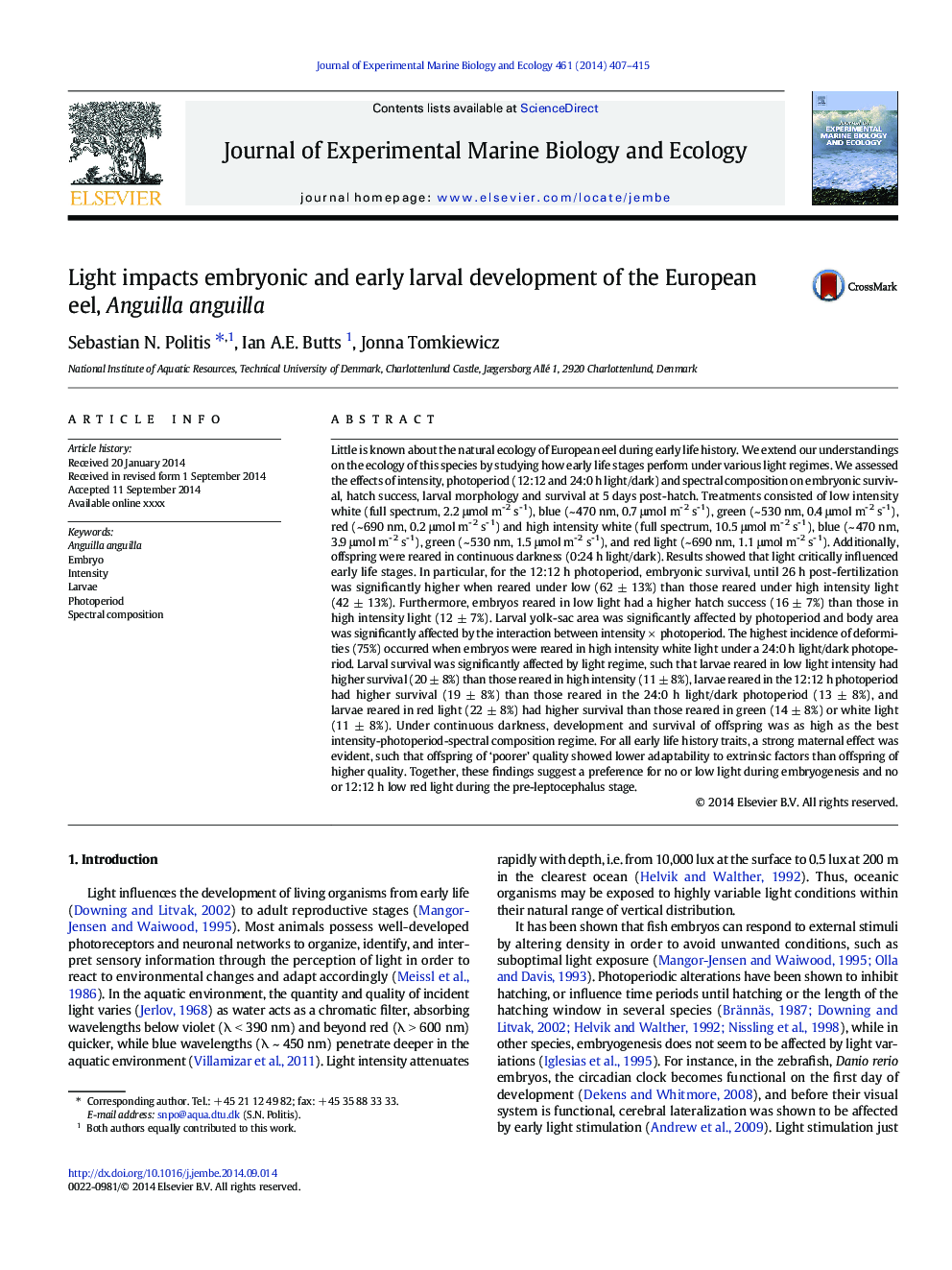| Article ID | Journal | Published Year | Pages | File Type |
|---|---|---|---|---|
| 6304003 | Journal of Experimental Marine Biology and Ecology | 2014 | 9 Pages |
Abstract
Little is known about the natural ecology of European eel during early life history. We extend our understandings on the ecology of this species by studying how early life stages perform under various light regimes. We assessed the effects of intensity, photoperiod (12:12 and 24:0 h light/dark) and spectral composition on embryonic survival, hatch success, larval morphology and survival at 5 days post-hatch. Treatments consisted of low intensity white (full spectrum, 2.2 μmol m- 2 s- 1), blue (~ 470 nm, 0.7 μmol m- 2 s- 1), green (~ 530 nm, 0.4 μmol m- 2 s- 1), red (~ 690 nm, 0.2 μmol m- 2 s- 1) and high intensity white (full spectrum, 10.5 μmol m- 2 s- 1), blue (~ 470 nm, 3.9 μmol m- 2 s- 1), green (~ 530 nm, 1.5 μmol m- 2 s- 1), and red light (~ 690 nm, 1.1 μmol m- 2 s- 1). Additionally, offspring were reared in continuous darkness (0:24 h light/dark). Results showed that light critically influenced early life stages. In particular, for the 12:12 h photoperiod, embryonic survival, until 26 h post-fertilization was significantly higher when reared under low (62 ± 13%) than those reared under high intensity light (42 ± 13%). Furthermore, embryos reared in low light had a higher hatch success (16 ± 7%) than those in high intensity light (12 ± 7%). Larval yolk-sac area was significantly affected by photoperiod and body area was significantly affected by the interaction between intensity Ã photoperiod. The highest incidence of deformities (75%) occurred when embryos were reared in high intensity white light under a 24:0 h light/dark photoperiod. Larval survival was significantly affected by light regime, such that larvae reared in low light intensity had higher survival (20 ± 8%) than those reared in high intensity (11 ± 8%), larvae reared in the 12:12 h photoperiod had higher survival (19 ± 8%) than those reared in the 24:0 h light/dark photoperiod (13 ± 8%), and larvae reared in red light (22 ± 8%) had higher survival than those reared in green (14 ± 8%) or white light (11 ± 8%). Under continuous darkness, development and survival of offspring was as high as the best intensity-photoperiod-spectral composition regime. For all early life history traits, a strong maternal effect was evident, such that offspring of 'poorer' quality showed lower adaptability to extrinsic factors than offspring of higher quality. Together, these findings suggest a preference for no or low light during embryogenesis and no or 12:12 h low red light during the pre-leptocephalus stage.
Related Topics
Life Sciences
Agricultural and Biological Sciences
Aquatic Science
Authors
Sebastian N. Politis, Ian A.E. Butts, Jonna Tomkiewicz,
